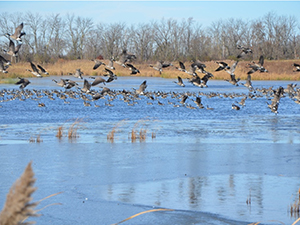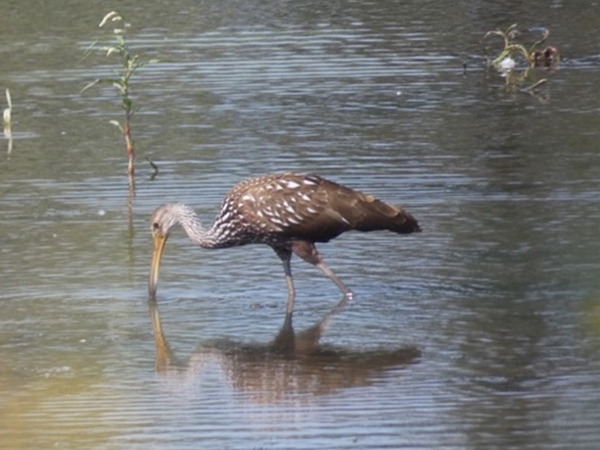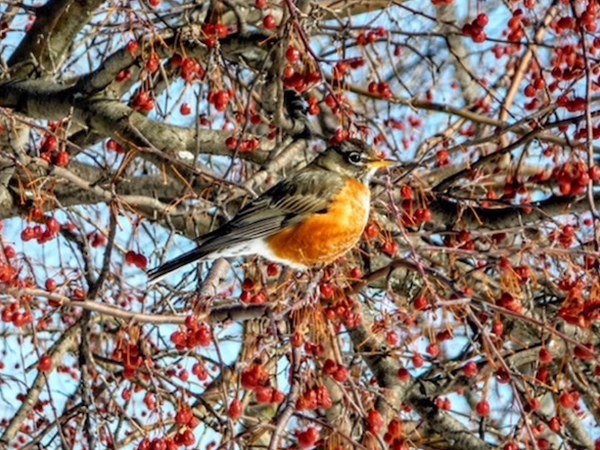How Do Mild Winters Affect Bird Migration?
Dec 19, 2023
For the past several years, winters have felt milder than those in decades past. But the unseasonable warmth isn’t just a feeling – it’s our new reality. Because of climate change, our mild winters are very likely here to stay.
Among the changes brought about by our new climate reality is the impact warmer winters have had on birds’ migratory patterns. Over the past 25 years, the Wild Goose Chase Indy team has witnessed these changes firsthand – and we’ve adjusted our services accordingly.
Warmer Winters Prolong Stay for Canada Geese
Back when our company got its first goose-chasing border collies, we had a long winter downtime. Cold weather generally triggered migration sometime around the beginning of October, and by mid-November, ponds would be frozen and the grass would be snow covered. The geese moved on to look for greener pastures.
This year, we have only just started to see the first big migration push here in the Midwest – and it’s December. Warm weather has persisted late into the season, with temperatures well above freezing most days and no snow cover. Geese are still abundant and, while most of our client contracts usually end on November 30, we have had more clients requesting to extend service into December and even January. It’s been the same for the last several years.
Non-Native Birds Visit the Midwest
Geese lingering late into the season isn’t the only bird-related anomaly we’ve seen. Species that previously only lived in warmer, southern climates have slowly begun to make their way north – and species that live in northern territories impacted by climate change have started to make their way south.
As recently as a week ago, a limpkin— a bird usually relegated to Florida and South America – was spotted in our area. Black bellied whistling ducks, which used to only reside in Texas, have been spotted in the Midwest more frequently and in greater numbers. Snowy owls, native to the arctic, used to be rare vagrants in the Midwest and would only move south during hard times up north. Today, they are not only found here every winter, but also come earlier and stay later as their usual habitat adjusts to the changing climate. People used to remember the American Robin as the first sign of spring, but we now see them year-round, feasting on fermenting winter berries and crabapples.

Limpkin documented recently at a client property

Robin feeding on winter berries

A snowy-owl in a not-so-snowy scene
Non-Avian Wildlife Affected by Warming
Things have gotten warmer for wildlife other than birds too. Decades ago, it was common practice to buy Chinese mantis egg sacs and release the babies in gardens to kill pests. It was safe to do: even if the mantids mated, their eggs couldn’t survive our harsh, Midwestern winters. That’s no longer the case and Chinese mantids now successfully hatch in the wild.
The plant hardiness zones in Illinois and Wisconsin have also changed over the past 10 years, with fewer winter hardy areas expanding further north and extreme cold hardy areas shrinking. This means plants will move north and new insects will follow, which will further change the dynamics of our ecosystems and all of the plants and animals in them.
Let Wild Goose Chase Indy Help You Adapt to a Changing Climate
However our environment may change, Wild Goose Chase Indy has you covered. Our team of staff biologists are experts at adapting quickly to changing scenarios. We are ready to help you with any bird troubles – regardless of the season. Our border collies are ready to deploy when geese show up on what is supposed to be a winter wonderland but is instead muddy grass.
For more information about our bird control services, or to schedule a site evaluation, contact us.


 0
0
